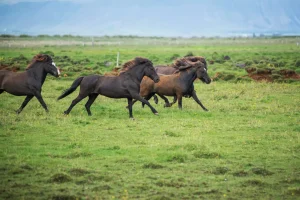New Forest Codes of Conduct
The New Forest
Codes of Conduct
New Forest Codes of Conduct
Certain Codes of Conduct have been put into place in the New Forest to help protect the area. These codes are really just common sense and apply to the three main leisure activities that are enjoyed in the area – cycling, dog walking and horse riding.
Anyone actively doing any of these should adhere to the appropriate Code of Conduct – this not only helps protect the flora and fauna of the Forest but also makes a visit to the area safer and more enjoyable for everyone.
The 3 main New Forest Codes of Conduct are given below:
Cycle Code
- Keep to the Way Marked tracks when cycling in the Forest
- Slow down and call out a warning when approaching other Forest users. Be courteous and friendly.
- Take extra care when nearing horse riders. When in a group, all cyclists should pass the horse on the same side.
- Do not startle ponies, cattle or other wildlife. Go slowly and give them space.
- Avoid causing obstructions – do not ride more than two abreast. Always ride in single file on narrow roads.
- Keep well away from any work going on in the Forest.
- Do not pass any vehicle loading timber until you have been told it is safe to do so.
- Use the map and plan to be out of the Forest by dusk.
Dog Walking Code
- If you cannot control your dog, keep it on a lead.
- A dog out of sight might be out of control. It must not be allowed to disturb or chase livestock or wildlife.
- Keep your dog to the existing tracks on the Forest when birds nest on the ground (1 March – 31 July). At this time, keep your dog close by or you may be asked by a Forest Ranger or keeper to put it on a lead.
- Prevent your dog fouling on footpaths or around car parks. If it does foul, remove the waste.
- Groups of dogs can be intimidating to wildlife and other Forest users. Keep them under control.
- Be considerate to other Forest users, particularly children at play and picnickers.
- Keep well away from any work going on in the Forest.
- Prevent excessive barking from your dog.
Horse Riding Code
- Keep to the tracks when the ground is soft or muddy.
- Take an alternative route to avoid soft slopes. Riding straight up and down causes erosion.
- Avoid widening existing tracks. Keep off re-seeded areas and recently reinstated rides.
- Vary your route on the Forest to spread the wear and tear.
- Keep to the tracks when birds are nesting on the ground (1 March – 31 July).
- Slow down and call out a warning when approaching other Forest users. Be courteous and friendly.
- Do not build jumps or create lunging areas on the Forest.
- Keep well away from any work going on in the Forest.
- Never ride more than two abreast. Limit groups to a maximum of eight horses on the road.

Why Time in Nature Complements Daily Astrological Guidance
Many of us start the morning with a quick look at our horoscope. A few lines can help name our mood, highlight a tension, or point out an opening in the day. What often gets

UK’s best natural spots
Wilderness escapes are not for everyone, that’s for sure. Some people simply prefer holidays where they can lounge all day and take it easy instead of being active, going hiking, swimming, or cycling. But there

Tech Hacks for Exploring the New Forest National Park
The New Forest National Park in the UK is one of Britain’s most enchanting natural destinations. Covering ancient woodlands, open heathlands, and winding walking trails, it offers visitors a chance to step back in time

The Benefits of Outdoor Life for Horses
Life outdoors shapes stronger, healthier horses. Sunlight fuels the body with vitamin D, which helps bones grow dense and resilient. Space allows movement that stables cannot match. A horse stretching into stride, breathing clean air,

New Forest Getaway
The New Forest in southern England is unlike anywhere else, one moment you’re on a country lane, the next you’re face to face with a pony blocking traffic. Villages with thatched roofs appear out of

How Satellite Imagery is Transforming Wildlife Conservation
Today, a myriad of species and their habitats are struggling to survive and are on the verge of extinction due to permanent pressure on deforestation, climate change, and unlawful activities like illegal mining and logging.
